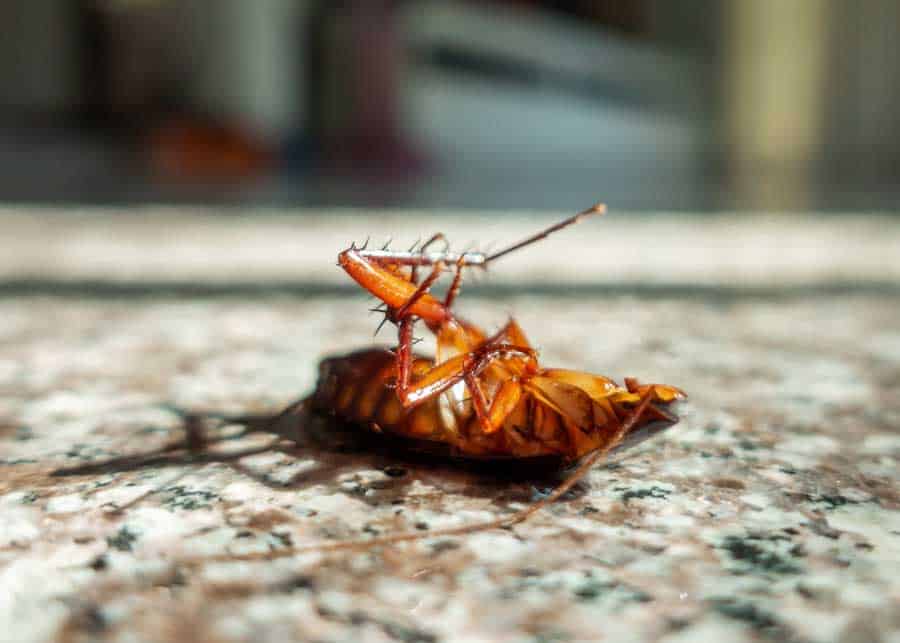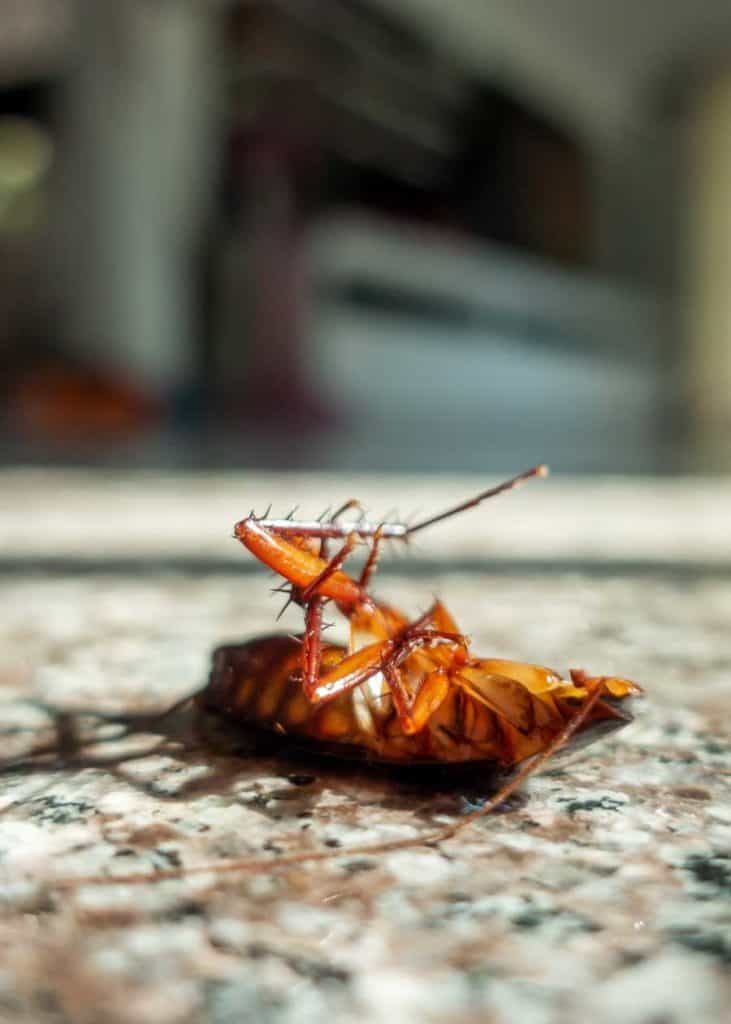Did you know that a cockroach can live without its head? Even their head can survive without its body. And how long can a cockroach live without its head? In this post, you’ll learn how long and why this is even possible.
Cockroaches can live up to a month without their head, although a shorter time is more common. They can survive without their head because of the decentralization of critical body functions. These include breathing, low energy requirements, an open circulatory system, and an active nervous system.

I know, this is a pretty gross topic. But for biology lovers, it’s a pretty great question. How long can a cockroach live without its head?
Here’s what you need to know.
Table of Contents
How Long Can a Cockroach Live Without Its Head?
A cockroach can survive up to a month without its head. The head itself can survive up to a few hours, perhaps even longer if frozen.
There are five reasons why a cockroach can survive without its head. These factors result in the decentralization of critical body functions.
1. Circulatory System
A cockroach’s unique circulatory system is unlike that of any mammal. Cockroaches possess an open circulatory system, meaning their blood does not flow through arteries and veins.
Their blood can easily reach every organ, and wounds get sealed off quickly. This way, they conserve all the nutrients in their blood.
2. Spiracles
Cockroaches have things called spiracles covering their sides. These spiracles are holes on the cockroach’s body that allow it to breathe through its body.
If a cockroach is separated from its head, it can still breathe through these spiracles.
3. Cold-Blooded
Cockroaches are cold-blooded creatures. Because they do not need to keep a constant body temperature, they do not need a lot of energy to keep that up.
Thus, they can survive for a very long time without needing much food.
4. Active Nervous System
Cockroaches have an active nervous system, which means the nerve tissues that control reflexes exist everywhere in their bodies.
Even if a cockroach loses its head, these nerve tissues continue to function. It can still move its body and sense things around them.
5. Lower Feeding Requirements
Different than mammals, insects can survive for weeks on just one meal. Bigger threats to a headless cockroach are predators and infection. Mold, virus, or bacterial infection can quickly kill a roach.
Even with this resilience, a cockroach can still die from dehydration or hunger. So while cockroaches can survive a considerably long time, they aren’t immortal.
Here’s how long a cockroach can live without food or water.
Video of Headless Cockroach
In this timelapse video, you’ll see this poor individual live at least 4 days after losing his head.
It seems that the smaller bugs ate him to death before he actually died from being headless.
More reading: Can cockroaches survive a nuke?
Headless Cockroaches Can Learn
In this study published on Nature.com, it was established that headless insects (cockroaches and locusts) can learn even without their head attached.
Here is the abstract for that study.
REMOVAL of the brain, and even of the whole head, leaves some insects such as cockroaches and locusts still able to walk, or right themselves when turned over. Evidently there is a high degree of local control of the posture and responses of the legs by the corresponding segmental ganglia; therefore not all details of the proprioceptive control of leg position need ascend to the brain. In turn, long-term adaptive changes in leg posture might then necessarily be controlled by the segmental ganglia if the detailed information were available only at the segmental level.
Learning of Leg Position by Headless Insects, Nature.com
This study was performed by neurobiologist George Adrian Horridge in 1962. His setup and test are known as the Horridge preparation.
Four Fun Facts About Cockroaches
Cockroaches are not only extremely resilient creatures, but they also have a host of other interesting attributes.
Check out these four fun facts about these ancient creatures.
Cockroach Cleanliness
Cockroaches clean themselves very often. They do this so the sensory bristles on their body and limbs are ready to sense anything. And more than that, they do it so they can appear as a desirable mate for other cockroaches.
But while they keep themselves clean to protect themselves, their GI tract still can harbor any disease passed around the area.
And while this might not seem like a big deal, they defecate over any surface or food they walk on and eat. Any disease being carried by a roach can be transferred to these surfaces through defecation.
Cockroach Speed
In 1991 a pair of scientists at the University of California, Berkeley, tested to see how fast the American Cockroach (Periplaneta americana) runs. Using a pressure-sensitive plate and high-speed cameras, they tracked eight roaches.
These tests showed that they could cover 1.5 meters in one second. That is a total speed of 5.5 km/h or 3.4 mph!
Here’s more about how fast a cockroach can run.
Multiplying Cockroaches
Cockroaches are not only fast with their feet, but they also multiply at an incredible rate.
Most roaches can produce 200 to 300 offspring in a single year. And what’s even crazier is that if you include their offspring, they can produce over 300,000 offspring over their lifespan!
This is a big reason why roaches are difficult to get rid of. Many species hide their eggs instead of carrying them, protecting their offspring from predators and dangers.
Medicinal and Food Uses
Did you know that Cockroaches are sold for medicinal purposes and human consumption? Scientists have found chemicals in the bodies of cockroaches that fight off harmful bacteria. This is how they survive in some of the dirtiest places.
This antibiotic is the reason why some use cockroaches for medicine.
In China, some people farm cockroaches for sale, claiming that there are numerous health benefits to eating them.
What purpose do roaches serve? Here are 10 reasons that cockroaches exist.
Here’s how to get rid of palmetto bugs.

Learn all about roaches in our huge Cockroach Guide.
Your Turn
Despite the bad rep they get as pests, cockroaches turn out to be one of the most interesting insects on Earth.
Cockroaches have existed for around 360 million years. They are clearly one of the most resilient creatures on earth. With this survivability, they are likely to survive millions more.
Have you observed a headless cockroach? Or experienced a roach infestation? Please share your experience below.
- About the Author
- Latest Posts
Bryan Haines is a co-founder and writer at The Buginator. And is working to make it the best resource for taking back the outdoors from biting, stinging pests.
He also blogs about travel at Storyteller.Travel and photography at Storyteller Tech. Bryan is a partner at Storyteller Media, a publishing company he runs with his wife, Dena.
